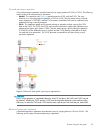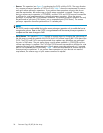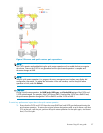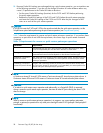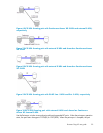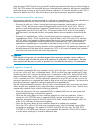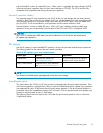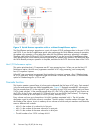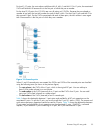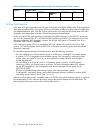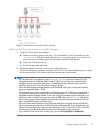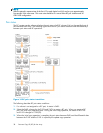
For Level 1 (L1) pairs, the root volume could have MU=0, MU=1, and MU=2. For L1 pairs, the associated
S-VOLs all have MU=0 because this is the first pair of which they are a member.
For the Level 2 (L2) pairs, the L1 S-VOLs are now all acting as L2 P-VOLs. Because they are already a
member of one pair, the next MU number for each of them is MU=1 for their first L2 pair and MU=2 for
their second L2 pair. For the S-VOLs associated with each of these pairs, the MU number is once again
MU=0becausethisisthefirst pair of which they are a member.
Figure 12 Cascade pairs
When L1 and L2 cascade pairs are created, the P-VOLs and S-VOLs of the cascade pairs are classified
using the following terms (as shown in the previous figure):
• The root volume is the P-VOL of the L1 pair, which is the original BC pair. You can add up to
three S-VOLs (node volumes) to a root volume.
• The node volume is the S-VOL (reserved) of an L1 pair and the P-VOL of an L2 pair. You can add
up to two S-VOLs (leaf volumes) to a node volume.
• The leaf volume is the S-VOL (reserved) of an L2 cascade pair.
Table 9 shows the relationship between L1 pair status and availability of BC pair operations on the
associated L2 pairs. To split an L2 pair, you must first split the L1 pair (L1 status = PSUS). The reverse and
quick restore pairresync operations cannot be used for L2 pairs. Table 10 shows the relationship between
L2 pair status and availability of pair operations on the associated L1 pairs. (CMD RJT = command
rejected.) If you delete an L1 pair containing an L2 pair, the L2 pair becomes the L1 pair.
Business Copy XP user guide
33



